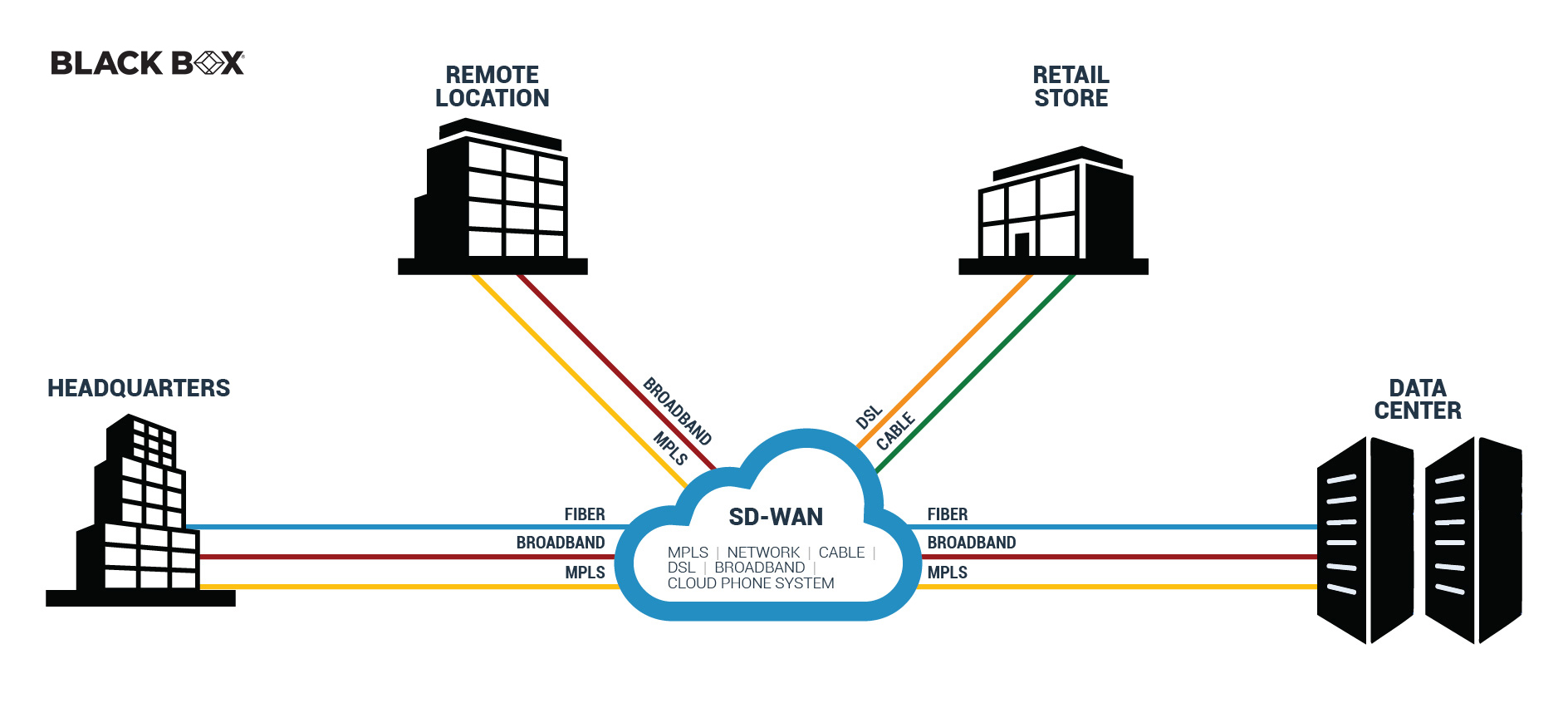These days, there’s a lot of buzz about SD-WAN and for good reason. The SD-WAN market is exploding alongside the growth of edge computing and digital transformation. Gartner estimates that by the end of 2023, more than 90% of WAN edge infrastructure refreshes will be SD-WAN (or other virtualized platforms) versus traditional routers. However, there is also a lot of confusion about what SD-WAN is and why it’s so important.
SD-WAN stands for Software-Defined Wide Area Network. Obviously, it’s a combination of a software-defined network (SDN) and a wide-area network (WAN). To better understand what it is, let’s break it down into its parts.
SDN is a cloud-computing approach used for internal data centers at headquarters. It was designed to enable network administrators to respond quickly to changing business requirements via a centralized interface.
A WAN is used to connect enterprises over large geographic areas. It is the network outside your headquarters that connects your data center to remote locations. It traditionally consists of site-to-site Multi-Protocol Label Switching (MPLS) hub-and-spoke architectures connecting branches to headquarters.
So, in essence, SD-WAN gives you the best of both worlds. You’ll get the ability to manage your entire WAN centrally via the cloud even if your enterprise is dispersed with hundreds or thousands of locations across the country.
In explaining SD-WAN solutions, Gartner analyst Andrew Lerner said, “SDN is an architecture, whereas SD-WAN is a technology you can buy.”
SD-WAN uses the cloud and the internet to connect the headquarters’ data center and branch locations. As opposed to router-centric MPLS WANs, SD-WAN networks separate the network management, traffic, and monitoring functions from the hardware. And, unlike MPLS networks that lock you into a contract with one provider, SD-WAN providers offer networks with the flexibility of being able to support multiple carrier options.

The many benefits of SD-WAN are making it an appealing alternative to MPLS networks for CIOs, CFOs, and line-of-business managers.
Simplicity: Primarily, SD-WAN companies offer IT professionals simplicity and the ability to manage an entire WAN through a single, centralized interface. With zero-touch provisioning, making enterprise-wide network upgrades can be done in minutes instead of weeks or months. It also eliminates the need for on-site technicians to do expensive and time-consuming configurations at every location.
End-to-End Visibility: Achieve better network visibility, control, and analytics through a single management interface. Legacy networks are incapable of providing insight into network and application behaviors. SD-WAN gives IT managers a clear view across the entire enterprise network from the local branch to the cloud to the headquarters.
Reduced Costs: SD-WAN is inherently less expensive than traditional hub-and-spoke networks because you eliminate the need for costly routers and other traditional network equipment at each location. You also eliminate the need to dispatch techs to install and maintain the network locally. In addition, some enterprises may not be able to justify the high cost of an MPLS circuit at small, remote sites, if it is even available in rural areas. It’s been estimated that SD-WAN costs (hardware, software, support) can be up to two and a half times less than traditional WAN architectures.
Increased Performance: SD-WAN improves both application and network performance. Because SD-WAN dynamically allocates bandwidth, data travels across multiple connection paths simultaneously using the fastest routes. You also have the ability to control bandwidth at each location depending on mission-critical and non-critical applications.
Increased Uptime: With a centralized management interface, you’ll reduce troubleshooting time and increase uptime. By aggregating multiple ISP and WAN connections, you get seamless redundancy in case one path fails. MPLS networks do not always have a failover to a secondary connection.
Improved Reliability: SD-WAN solution is optimized for access to the cloud and for remote access to on-site resources. It also improves the efficiency and reliability of cloud applications such as SalesForce and Microsoft Office 365.
Increased Flexibility: SD-WAN frees you from being locked into contracts with one provider. With SD-WAN, you can switch carriers, mix and match carriers, and create hybrid SD-WAN/MPLS networks.
The move to SD-WAN is fundamentally changing the way enterprises communicate. The basic infrastructure of enterprise networks is evolving from a proprietary, vendor-specific MPLS network to a vendor-agnostic cloud transport network that is easily deployed, centrally managed, and less expensive.
Black Box offers state-of-the-art SD-WAN technology in its SimplEdge “network-in-a-box” bundle, which includes everything needed for branch networks from the cabling. Wi-Fi and security to complete professional, managed services. Learn more about SimplEdge at blackbox.com/simpledge.
If you would like to receive our quarterly newsletter, View from the Edge, you can sign up here.